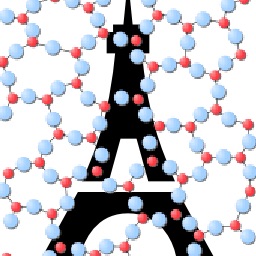Quantifying the internal stress in over-constrained glasses by molecular dynamics simulations
Topological constraint theory classifies network glasses into three categories, viz., flexible, isostatic, and stressed–rigid, where stressed–rigid glasses have more topological constraints than atomic degrees of freedom. Such over-constrained glasses are expected to exhibit some internal stress due to the competition among the redundant constraints. However, the nature and magnitude of this internal stress remain poorly characterized. Here, based on molecular dynamics simulations of a stressed–rigid sodium silicate glass, we present a new technique allowing us to directly compute the internal stress present within a glass network. We show that the internal stress comprises two main contributions: (i) a residual entropic stress that depends on the cooling rate and (ii) an intrinsic topological stress resulting from the over-constrained nature of the glass. Overall, these results provide a microscopic picture for the structural instability of over-constrained glasses.
